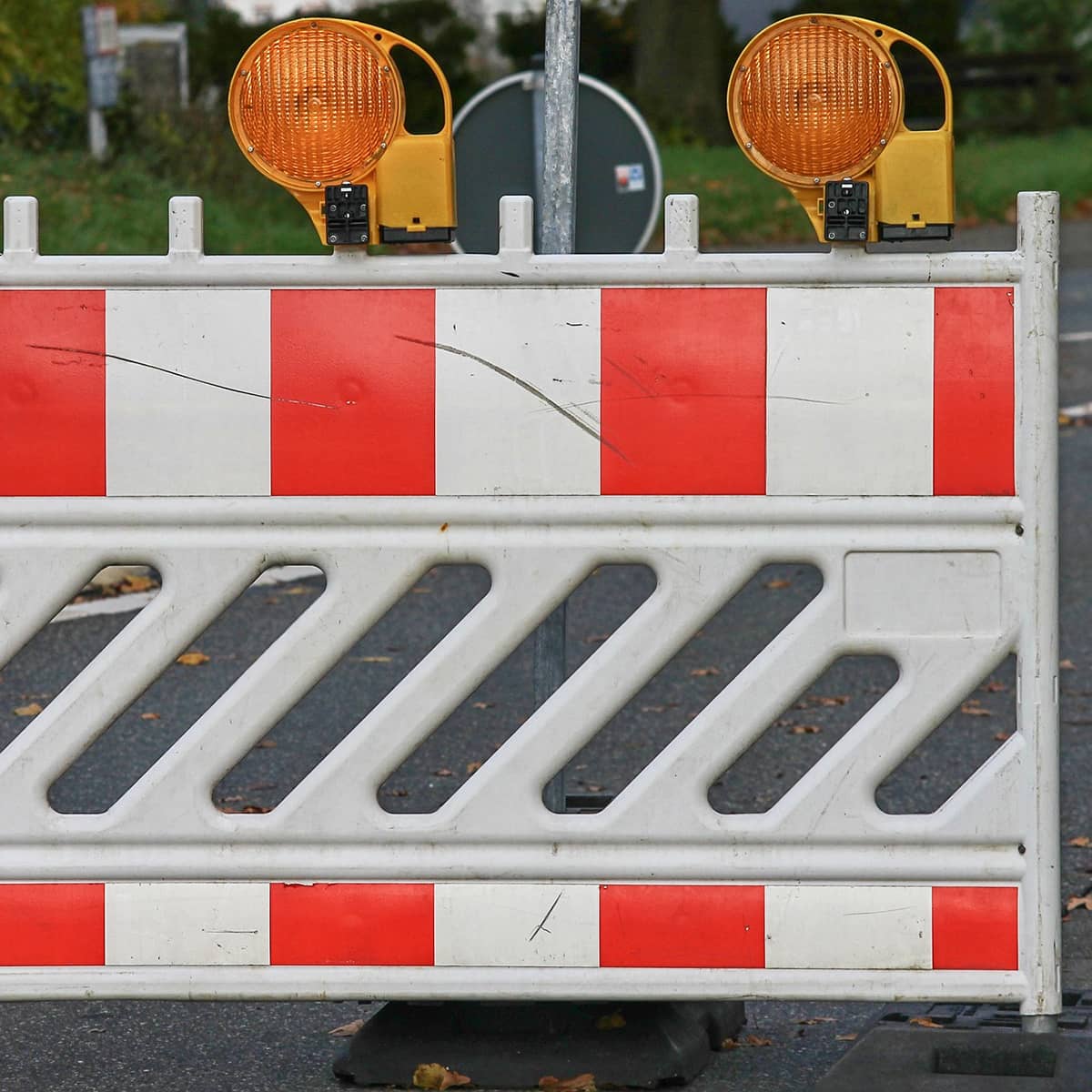In this short article, we briefly go over three different methods of road line marking removal, explaining how each one works, some of the benefits associated, and some of the reasons it might not be suitable for certain road types.
Scabbling
Scabbling is one of the most common and intensive forms of road line marking removal, which works by grinding the old line markings away using a rotating head containing a series of tungsten-tipped pins. Usually hand-operated, a scabbling machine has the capacity to remove up to 1000 feet of line markings every hour, and can also be used to level off high points of unevenly installed line markings.
Although highly cost-effective, especially in the removal of thermoplastic road line markings, the use of a scabbling machine isn’t advised on weak road surfaces as it can cause irreparable damage.
Hydro-blasting
Hydro-blasting for road line removal is, as the name suggests, removing road line markings by blasting them with a high-powered jet of water. This method is clean and efficient, and can be used safely on fragile road surfaces.
Some of the key benefits of hydro-blasting for road line removal, include:
- Hydro-blasting doesn’t use chemicals – It is just water, so as well as being safe to use for a trained and experienced operator, it also doesn’t cause issues within the surrounding environment.
- Hydro-blasting doesn’t require heat – Although heat is essential for certain types of line marking removal, hydro-blasting’s lack of direct heat means it’s suitable for softer and more fragile road surfaces.
- Hydro-blasting is accurate – Hydro-blasting is a form of line marking removal that can be delivered accurately, which helps when removing line markings in awkward, hard-to-reach places.
One of the drawbacks to hydro-blasting for line removal, is the relatively high cost of carrying it out, making it less cost-efficient for smaller line marking removal projects than other methods, such as scabbling or thermal lancing.
Thermal lancing
Thermal lancing is the most widely-used form of line marking removal and involves using a combination of heat and compressed air to effectively melt and remove old and diminished line markings. This method of line marking removal is extremely cost-efficient and highly-effective for use over long distances. Thermal lancing is also an accurate form of line marking removal, making it ideal for more detailed work.
One of the main drawbacks of thermal lancing is that the process can be noisy and create unpleasant fumes and smoke, making it unsuitable to use in busy town centres or residential areas.
Contact us
If you’re looking for a line marking expert, specialising in road line marking, car park line marking, warehouse line marking and playground line marking, contact City Road Markings, one of the UK's leading line marking companies.
